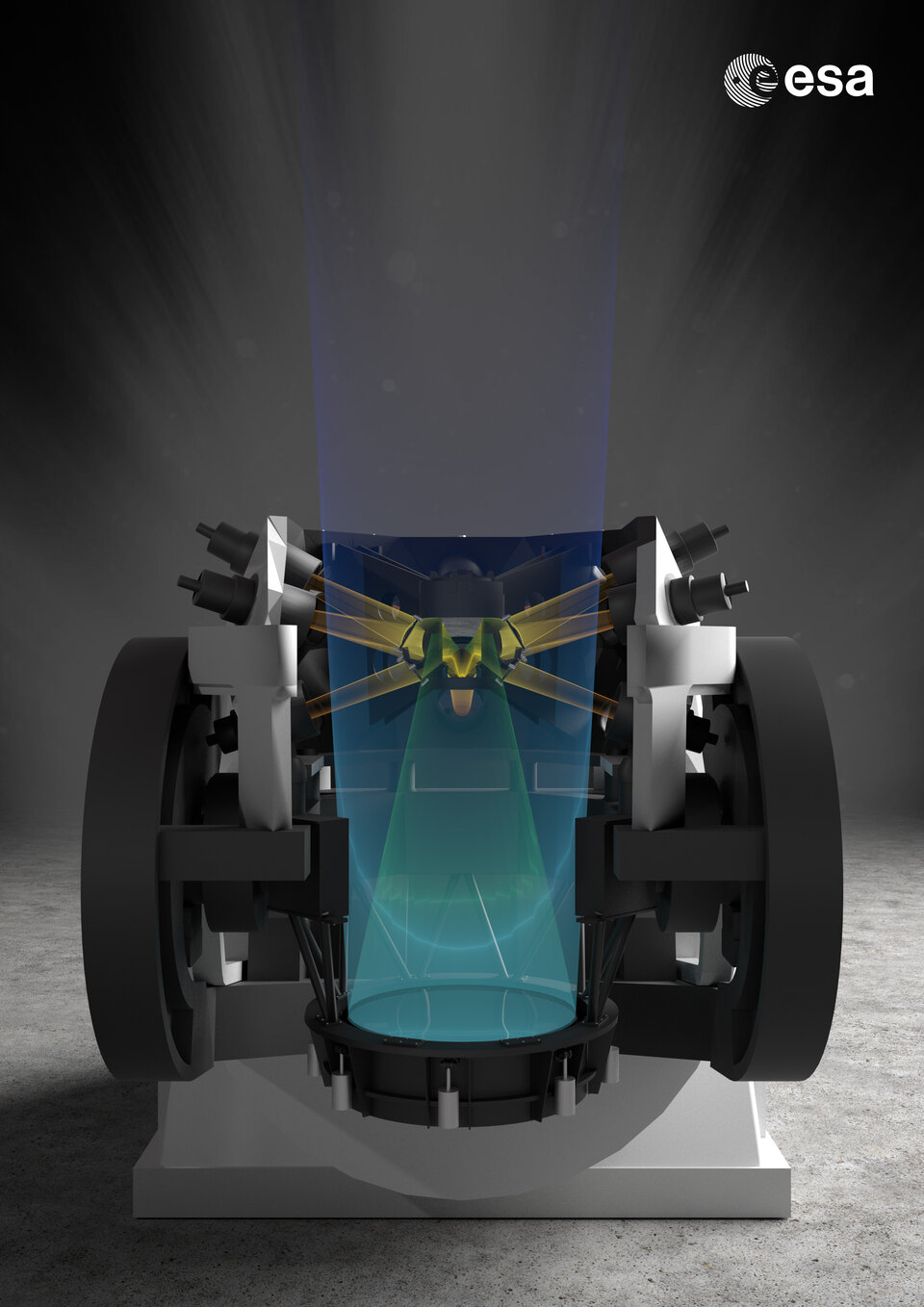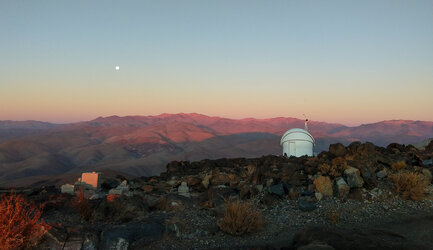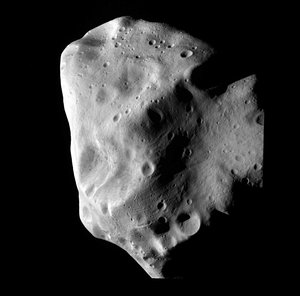Flyeye: ESA’s bug-eyed asteroid hunters

As part of the global effort to detect potentially hazardous asteroids and comets, ESA is developing a series of automated telescopes, inspired by an insect’s compound eye, to scan the sky every night.
A network of up to four ‘Flyeye’ telescopes spread across the globe will work together to carry out nightly sky surveys and automatically identify possible new Near-Earth Objects (NEOs) that could impact our planet.
These observations will be confirmed by human astronomers the next morning, before being submitted to the Minor Planet Center, where they will trigger the follow-up observations necessary to better understand the object’s orbit and chance of impacting Earth.
“We are working to ensure that Europe has the capability to detect hazardous asteroids larger than roughly 40 m a few weeks before a potential impact,” says Holger Krag, Head of ESA’s Space Safety programme.
Insect inspiration
We all know how good flies are at detecting motion: no matter from which direction we strike, they easily avoid our futile attempts to swat them. This is primarily thanks to their large compound eyes, which have evolved over millions of years to help them to detect motion anywhere in a very wide field of view and escape danger.
ESA’s Flyeye telescopes take inspiration, and their name, from these insectoid eyes. Like a fly’s eye, the telescope splits incoming light into different channels. Each channel is then focussed by a secondary lens onto a separate detector. This design provides the telescopes with a very wide field of view compared to a traditional telescope capable of detecting similarly faint objects.

A Flyeye telescope will take an image of a large region of the night sky every few minutes, before moving on to another region to repeat the process. The telescope’s specialised data processing software will automatically detect differences between consecutive images of the same region and flag them to human astronomers as evidence of small, faint, fast-moving objects passing through the frame that could be new asteroids.
The next morning, astronomers at ESA’s Near-Earth Object Coordination Centre (NEOCC) will verify that the detections are legitimate and submit the data to the Minor Planet Center (USA). Astronomers will use this data to carry out follow-up observations with powerful telescopes with a smaller field of view. This will allow them to measure the trajectory of the object with higher precision and assess the hazard it poses to our planet.
“The extremely wide field of view of the Flyeye telescopes will enable us to scan the night sky for interesting or hazardous objects much quicker than we could before,” says Richard Moissl, Head of Planetary Defence at ESA.
Flyeye-1


Access the video
The telescope
The development of the first-generation ‘Flyeye-1’ telescope began in 2016, when ESA signed a contract with a European consortium led by OHB Italy.
Inside the telescope, a single mirror collects the light from the full field of view and feeds it into a pyramid-shaped beam splitter with 16 facets, which divides it into 16 separate tubes. The secondary lenses inside these tubes focus the light onto individual cameras, subdividing a region of the sky into 16 smaller images to expand the telescope's field of view.
The Flyeye-1 telescope has a diameter of 1 m and a field of view of 45 square degrees, where 1 square degree covers an area in the sky roughly four times as large as the Moon as seen from Earth. Telescopes of this size typically have a much smaller field of view.
The telescope will undergo final testing and validation at the Italian Space Agency’s (ASI) Centre for Space Geodesy in the city of Matera, Italy, in late 2024 and early 2025.

The observatory
Once complete, the Flyeye-1 telescope will be transported to the island of Sicily, Italy, for installation at a dedicated observatory near the top of Monte Mufara.
Monte Mufara is a 1865-metre-high mountain located within the Madonie Natural Park, just a few kilometres from the observatory where Italian astronomer Giuseppe Piazzi discovered the first asteroid – the dwarf planet Ceres – in 1801.
In 2019, ESA tasked EIE Group with designing and building an observatory to house Flyeye-1 that met the project’s technical needs, such as stability against seismic activity, while minimising its environmental impact and meeting the requirements of the Madonie Park authorities, representatives from local municipalities and the nearby GAL Hassin observatory.
The site and access road required for the construction of the observatory was made available by ASI. Construction began in June 2024 and is expected to be completed by the end of 2025, in time for the telescope’s arrival.
Flyeye-2
ESA has already begun the development of the second generation ‘Flyeye-2’ telescope that will offer even greater asteroid detection capabilities while maintaining a wide field of view. ‘Flyeye-2’ is expected to be deployed in the southern hemisphere by 2028.














 Germany
Germany
 Austria
Austria
 Belgium
Belgium
 Denmark
Denmark
 Spain
Spain
 Estonia
Estonia
 Finland
Finland
 France
France
 Greece
Greece
 Hungary
Hungary
 Ireland
Ireland
 Italy
Italy
 Luxembourg
Luxembourg
 Norway
Norway
 The Netherlands
The Netherlands
 Poland
Poland
 Portugal
Portugal
 Czechia
Czechia
 Romania
Romania
 United Kingdom
United Kingdom
 Slovenia
Slovenia
 Sweden
Sweden
 Switzerland
Switzerland


































